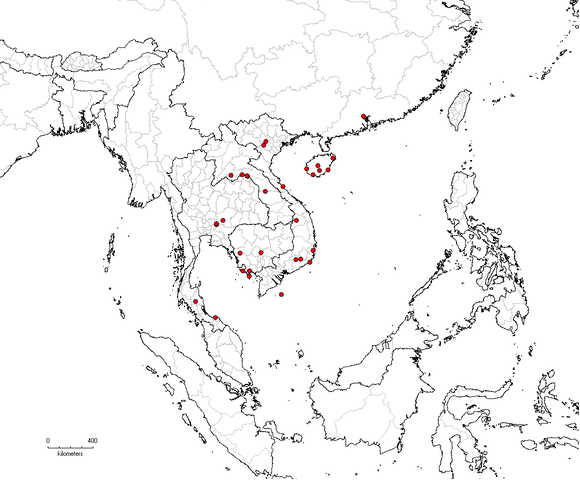Nomenclature
Erycibe elliptilimba Merr. & Chun, Sunyatsenia 2: 45. 1934.
Erycibe fecunda Kerr, Bull. Misc. Inform. Kew 1941: 10. 1941.
Erycibe noei Kerr, Bull. Misc. Inform. Kew 1941: 11. 1941; Fl. Siam. 3(1): 97. 1951.
Erycibe poilanei Gagnep., Not. Syst. 14: 28. 1950.
Erycibe rabilii Kerr, Bull. Misc. Inform. Kew 1941: 12. 1941; Fl. Siam. 3(1): 97. 1951.
Misapplied name: Erycibe paniculata authors not Roxb.: e.g., Gagnep. & Courchet in Lecomte, Fl. Indo-Chine 4: 305. 1915.
Description
Fang R.C., G. Staples, et al. 1995. Convolvulaceae in P. Raven & C.Y. Wu (eds.) Flora of China 16: 271–325.
Biogeography, Ecology and Natural History

China (Guangdong, Hainan, Cambodia, Laos, Thailand, Vietnam.
China: Roadsides, dry
slopes, forests, seashores, on sandy soils, loam, and clay; 0–600 m.
Thailand: Primary, evergreen,
seasonal hardwood forest, scrub jungle; altitude: 50–800 m.
Flw. Jul-Nov, frt. Oct-Apr.
Fang R.C., G. Staples, et al. 1995. Convolvulaceae in P. Raven & C.Y. Wu (eds.) Flora of China 16: 271–325.
Other information
Molecular Data
Fang R.C., G. Staples, et al. 1995. Convolvulaceae in P. Raven & C.Y. Wu (eds.) Flora of China 16: 271–325.
Authorship for webpage


Add new comment